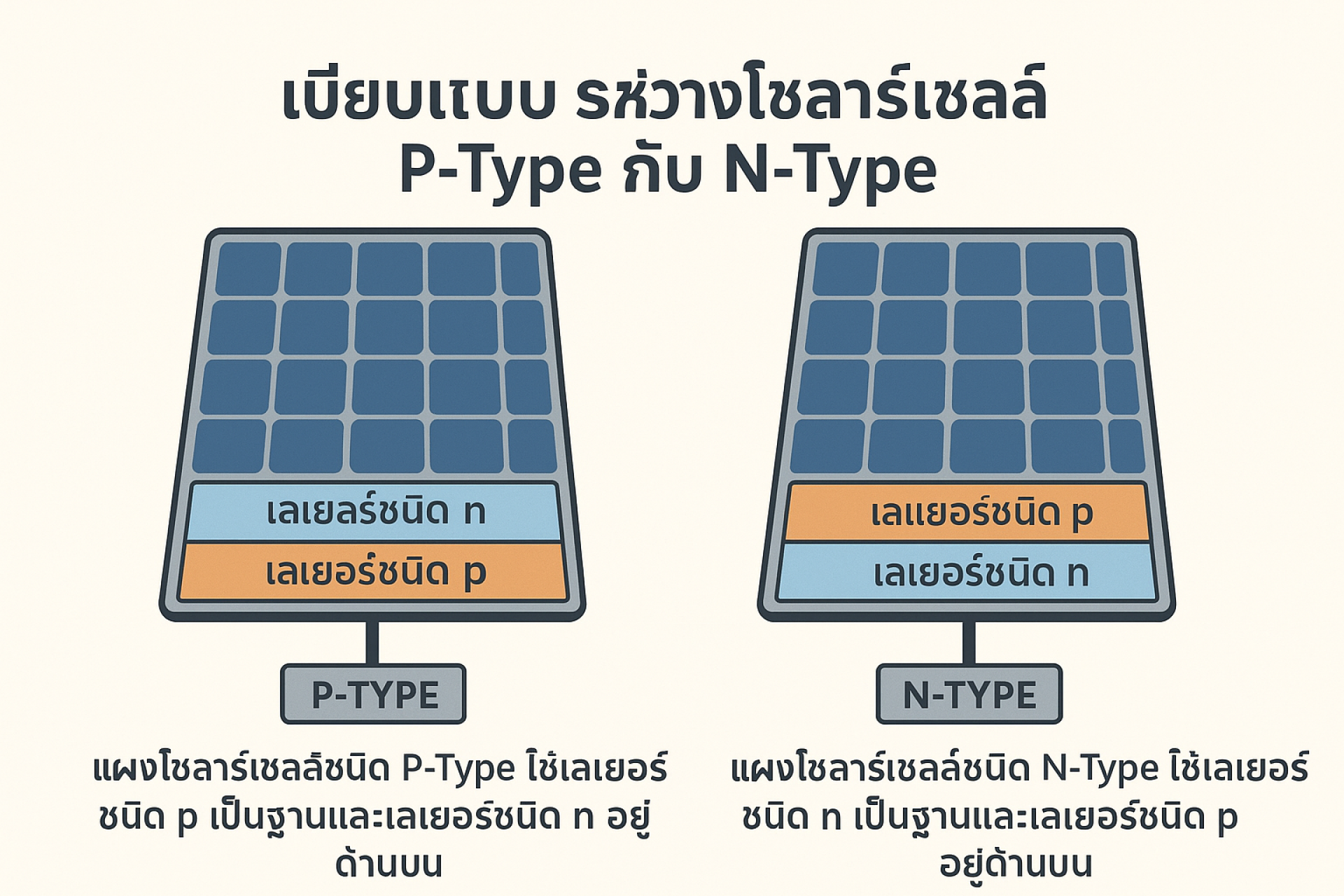Understanding P-Type vs N-Type Solar Panels: What’s the Difference?

P-Type Solar Panels
Built with a p-type (positive) layer as the base and an n-type layer on top.
The most common and widely used solar technology in the market.
Lower manufacturing costs compared to N-Type panels.
Limitation: Prone to Light Induced Degradation (LID), meaning performance may decline over time.
N-Type Solar Panels
Built with an n-type (negative) layer as the base and a p-type layer on top.
Higher efficiency due to better electron mobility and reduced energy loss.
Resistant to LID, maintaining power output more consistently over the years.
Higher initial cost, but offers longer lifespan and better long-term returns.
Which Should You Choose?
If you are looking for lower upfront investment, P-Type may be the right choice.
If you want higher efficiency, durability, and better returns in the long run, N-Type is the superior option.


